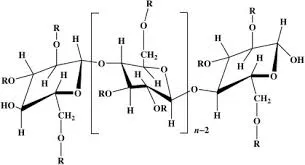
Dec . 16, 2024 03:56 Back to list
hydroxypropyl methyl cellulose ether
Exploring Hydroxypropyl Methylcellulose Ether Properties, Applications, and Benefits
Hydroxypropyl methylcellulose (HPMC) ether is a non-ionic, water-soluble polymer derived from natural cellulose. It has gained significant attention across various industries due to its unique properties and versatility. This article delves into the characteristics, applications, and benefits of HPMC ether, highlighting its importance in modern formulations and technologies.
What is Hydroxypropyl Methylcellulose?
HPMC is synthesized by the controlled reaction of cellulose with propylene oxide and methyl chloride. This chemical modification enables a range of properties that are beneficial for various applications. The resultant polymer is typically a white, odorless, and tasteless powder, which can easily dissolve in cold or hot water to form a clear, viscous solution. The degree of substitution of hydroxypropyl and methyl groups affects the solubility and viscosity of the polymer, making it customizable for specific needs.
Key Properties
HPMC ether exhibits distinctive characteristics that make it suitable for diverse applications
1. Water Solubility HPMC is highly soluble in cold and hot water, forming a clear gel solution. This property is particularly advantageous in food and pharmaceutical applications.
2. Viscosity Modification The viscosity of HPMC solutions can be adjusted through the concentration of the polymer and the degree of substitution, allowing formulators to achieve desired thickness and texture in various products.
3. Non-ionic Nature As a non-ionic polymer, HPMC does not interact with ionic species, making it ideal for use in formulations sensitive to ionic strength.
4. Thermal Stability HPMC is thermally stable and retains its properties even when exposed to high temperatures, which is critical for processes that involve heating.
5. Film-Forming Ability HPMC can form thin films upon drying, making it useful in coatings and encapsulation applications.
Applications
The versatility of HPMC ether has led to its widespread use in several sectors
hydroxypropyl methyl cellulose ether

1. Pharmaceuticals HPMC is commonly used as a binder, coating agent, and controlled-release agent in tablet formulations. Its film-forming property allows for the creation of protective coatings that improve stability and release profiles.
2. Food Industry In the food sector, HPMC serves as a thickening agent, emulsifier, and stabilizer in various products like sauces, dressings, ice creams, and baked goods. It enhances texture, viscosity, and mouthfeel while also contributing to shelf life.
3. Construction HPMC is used as an additive in dry-mix mortars, adhesives, and joint compounds. It improves the workability, adhesion, and water retention of construction materials, facilitating better application and durability.
4. Cosmetics and Personal Care As an ingredient in lotions, creams, and gels, HPMC enhances the viscosity and stability of formulations. It helps to create a smooth texture, allowing for easy application and improved sensory experience.
5. Agriculture HPMC is utilized in agricultural formulations, serving as a thickener for pesticides and herbicides, ensuring uniform distribution and adherence to plant surfaces.
Benefits of Hydroxypropyl Methylcellulose
The use of HPMC ether provides several advantages across applications
1. Enhanced Performance HPMC significantly enhances the performance of formulations by improving stability, texture, and release profiles.
2. Versatility Its ability to be tailored in terms of viscosity and solubility makes it suitable for a wide range of uses, accommodating different industries and applications.
3. Safety and Acceptability HPMC is considered safe for human consumption and is generally recognized as safe (GRAS) by regulatory bodies, making it a preferred ingredient in food and pharmaceutical products.
4. Eco-friendly Being derived from natural cellulose, HPMC is biodegradable and poses minimal environmental concerns compared to synthetic polymers.
In conclusion, hydroxypropyl methylcellulose ether stands out as a valuable ingredient across numerous industries. Its unique properties and versatility make it an essential component in formulations ranging from pharmaceuticals to construction materials. As industries continue to innovate, HPMC ether will likely play a crucial role in developing more effective and sustainable products.
-
Versatile Hpmc Uses in Different Industries
NewsJun.19,2025
-
Redispersible Powder's Role in Enhancing Durability of Construction Products
NewsJun.19,2025
-
Hydroxyethyl Cellulose Applications Driving Green Industrial Processes
NewsJun.19,2025
-
Exploring Different Redispersible Polymer Powder
NewsJun.19,2025
-
Choosing the Right Mortar Bonding Agent
NewsJun.19,2025
-
Applications and Significance of China Hpmc in Modern Industries
NewsJun.19,2025







